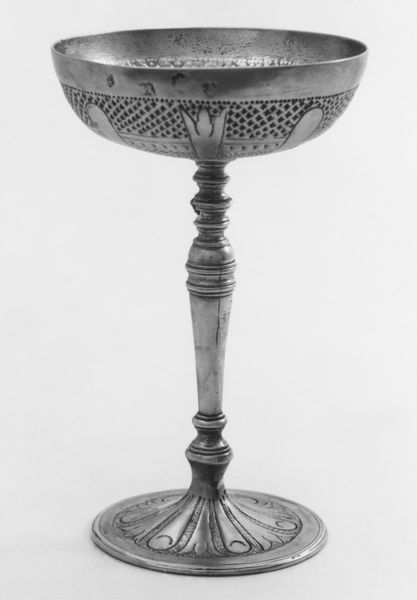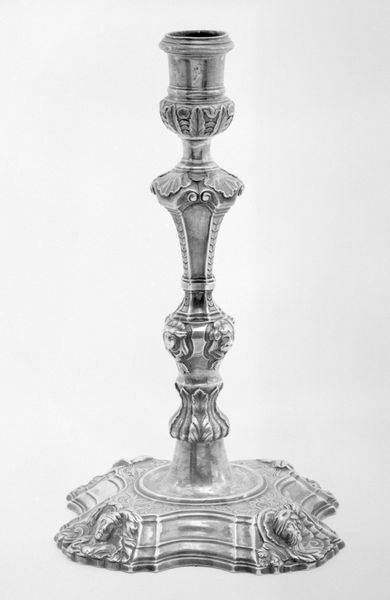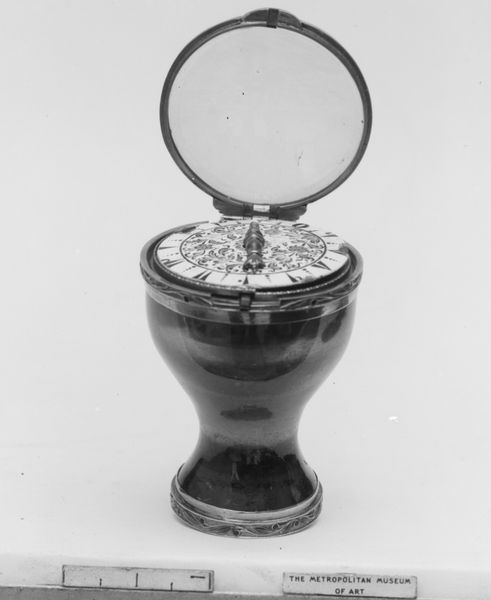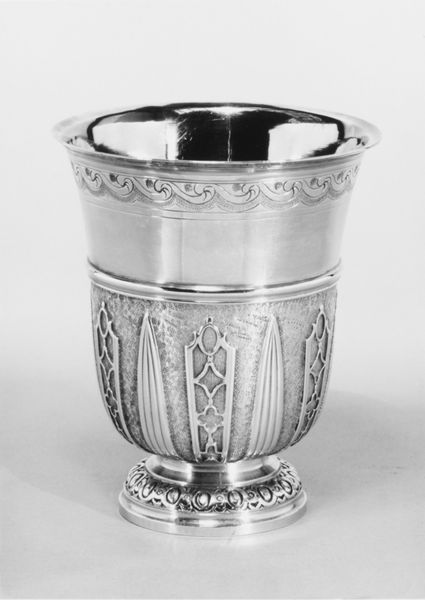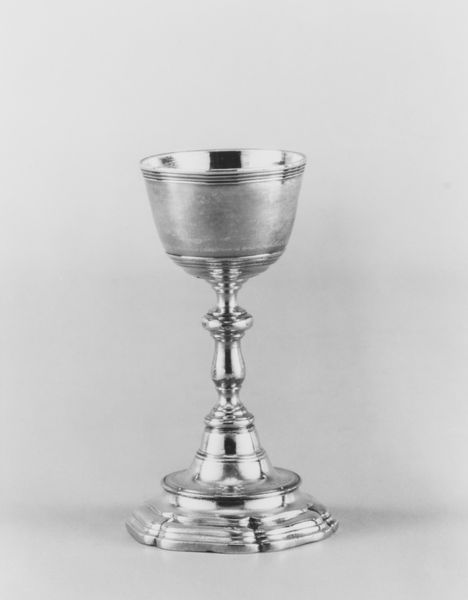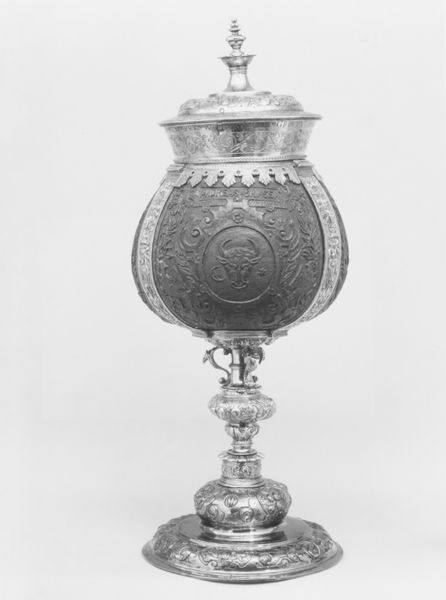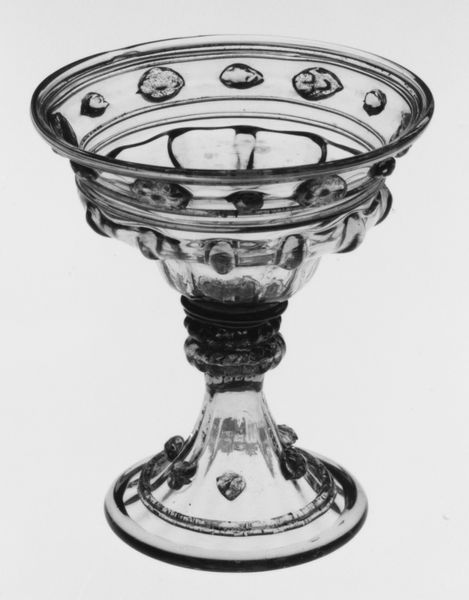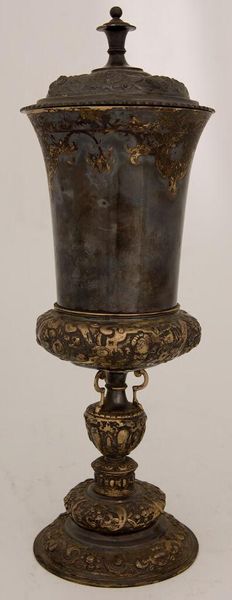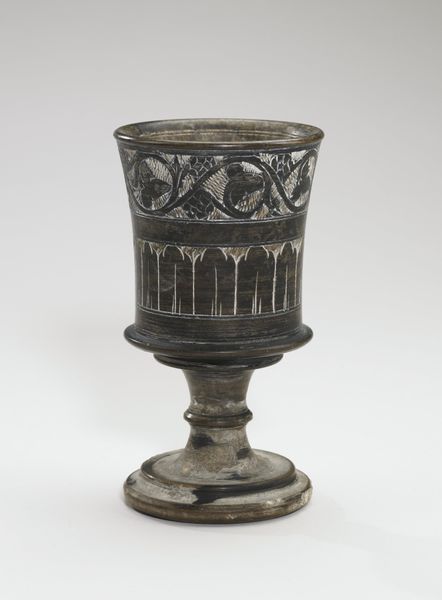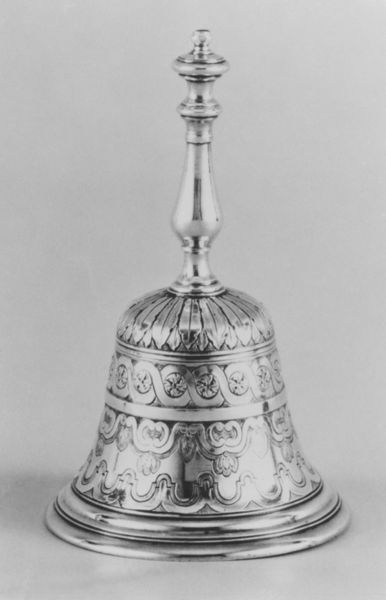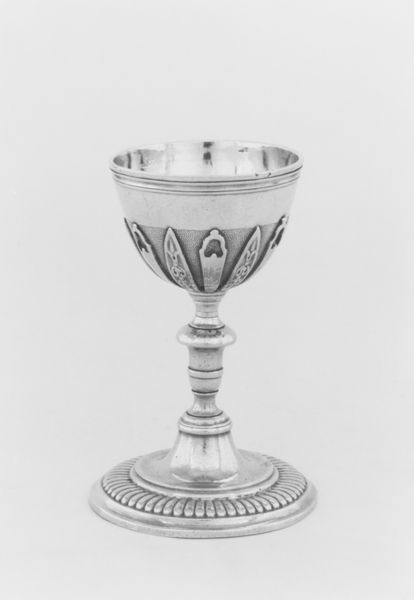
Candlestick and workbox (table à ouvrage en guéridon) 1780 - 1790
0:00
0:00
Dimensions: 29 1/2 in. (74.9 cm); Diameter: 11 5/8 in. (29.5 cm)
Copyright: Public Domain
Curator: This intricately crafted piece, a Candlestick and Workbox, or "table à ouvrage en guéridon", was created by Martin Carlin between 1780 and 1790. It’s currently held here at the Metropolitan Museum of Art. Editor: My first thought? Elegant restraint. The piece is so self-contained and geometrically pleasing, there's a real refinement in its vertical ascent and formal relations of its parts. Curator: Indeed. Consider the historical context; furniture like this reflected a move away from the heavier Rococo styles toward a more Neoclassical simplicity, aligning with the intellectual mood of the Enlightenment and its socio-political changes in French society. Editor: I’m drawn to the marquetry though—it really softens that shift. The play of light and shadow across the contrasting inlays animates what could have been a severe form, and provides ornamentation through structured embellishment. Notice the cylindrical space designed for, what appears to be, practical means like sewing tools and other work supplies? The object itself elevates craft, yet provides utilitarian features and functionality. Curator: It's a brilliant synthesis of utility and aesthetics. The use of different wood types, and the overall vertical structure is key to its significance. Think of it, if you will, as a commentary on domestic roles of the time. Fine craftsmanship of these objects allowed aristocratic and bourgeois women access to furniture within the domestic spaces designed for female enrichment such as artistic application in needlepoint or sketch drawing, for example. It allowed women of means an occupation or craft that reflected good character and moral upstanding. Editor: You see how function informs not just form, but social narrative. From my standpoint, I cannot dismiss the obvious harmony of volumes: the careful proportionality achieved from top to base. One might wonder about the choices that led to these refined mathematical relationships? Curator: We are fortunate to be able to scrutinize the craftsmanship and consider what it illuminates about the past, how these things played out within the society which the design sprung from. Editor: I agree, exploring objects like these gives insights into an enduring conversation about aesthetics and purpose. It has encouraged me to consider how art elevates everyday experiences, transforming mundane objects into moments of structured composition.
Comments
No comments
Be the first to comment and join the conversation on the ultimate creative platform.

